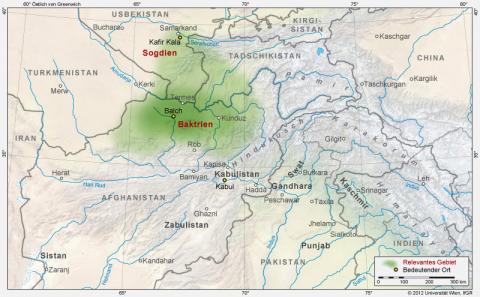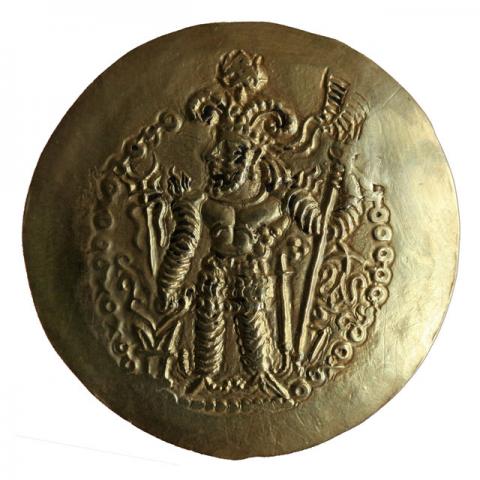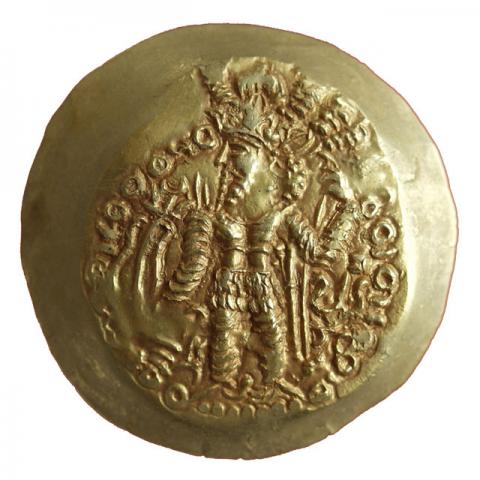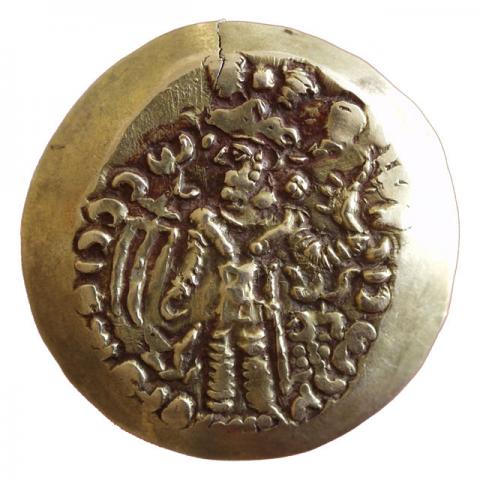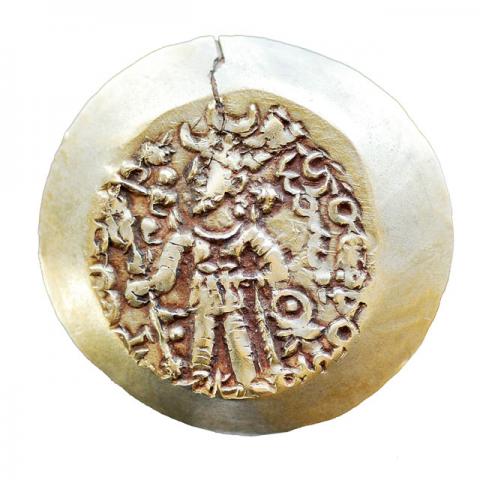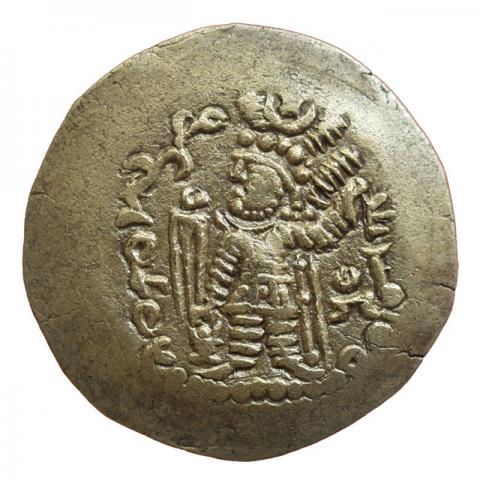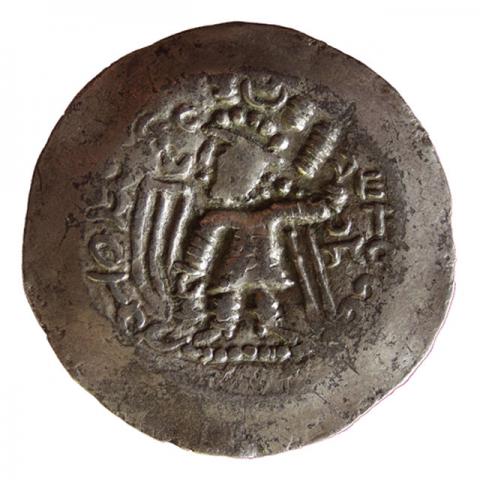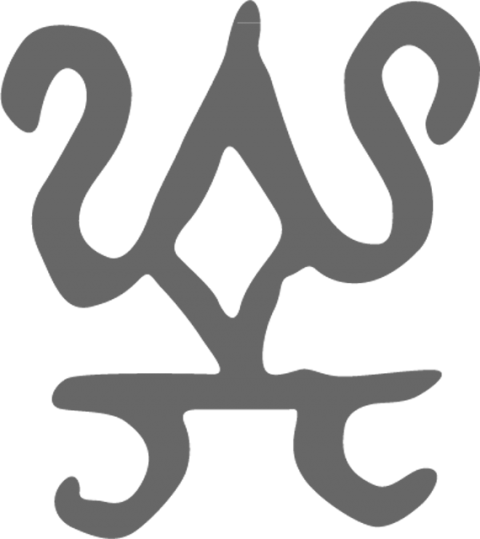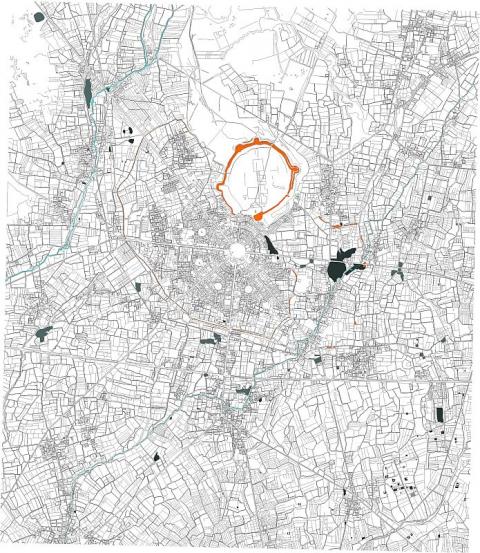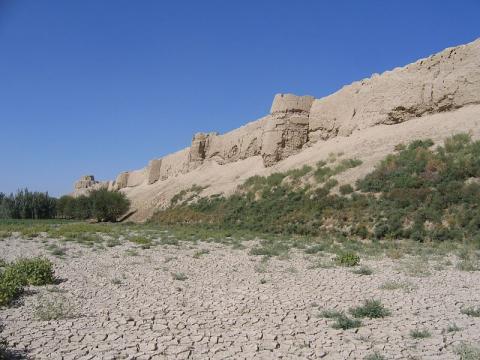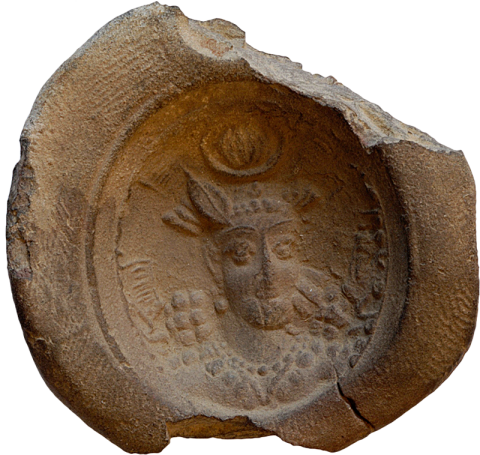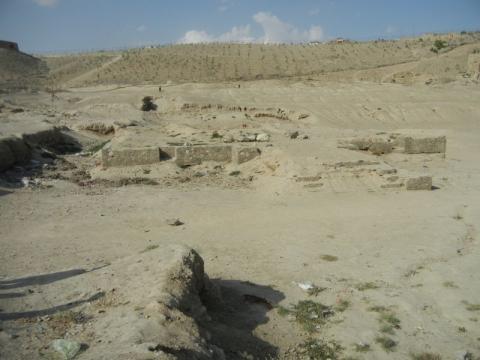A. Symbol (tamga) of the Kidarites
B. Balkh (North Afghanistan), city plan and view of southern city wall. (© Philippe Marquis, DAFA)
Balkh, the "Mother of all Cities", was the capital and administrative center of Bactria for centuries; after 370 CE it was also the residence and mint of the Kidarites. Priscus (d. around 474 CE), a late Antique historian, records that the Kidarites were defeated in 467 CE by the Sasanian king Peroz (457–484 CE) and the capital Balkh was captured. In this context, Priscus speaks specifically of "Huns, who are called Kidarite".
C. Clay bulla of a Kidarite king, who bears the title "...King of the Huns, Great King of the Kushan, Ruler over Samarkand". 4th/5th century CE. (© Aman ur Rahman)
D. Clay bulla of a Kidarite king found in Kafir Kala. 4th/5th century CE. (© Uzbek-Italian Archaeological Expedition)
E. Kafir Kala, settlement with fortress, 12 km south of Samarkand in the valley of the Zaravshan River (Uzbekistan). (© Simone Mantellini, Uzbek-Italian Archaeological Expedition)
The main settlement phases span from the 4th into the 8th century CE, when the fortress was partially burnt down by the Arabs. Archaeological excavations have brought to light an administrative archive with over 400 clay bullae, showing that the city was ruled by the Kidarites in the 4th/5th century CE.
F. Stupa of the Buddhist monastery of Tepe Maranjan (in Kabul). (© Michael Alram)
A coin hoard discovered during excavations in 1933 documents the end of Sasanian rule in Kabulistan. Beside 367 Sasanian silver drachms from the Sasanian imperial mint in Kabulistan, it contained twelve golden skyphat dinars of the Kidarites from Balkh (compare Nos. 5, 6). The treasure was buried sometime around 385 CE. The former Sasanain mint in Kabulistan was then taken over by the Alkhan (showcase 6, 7).


